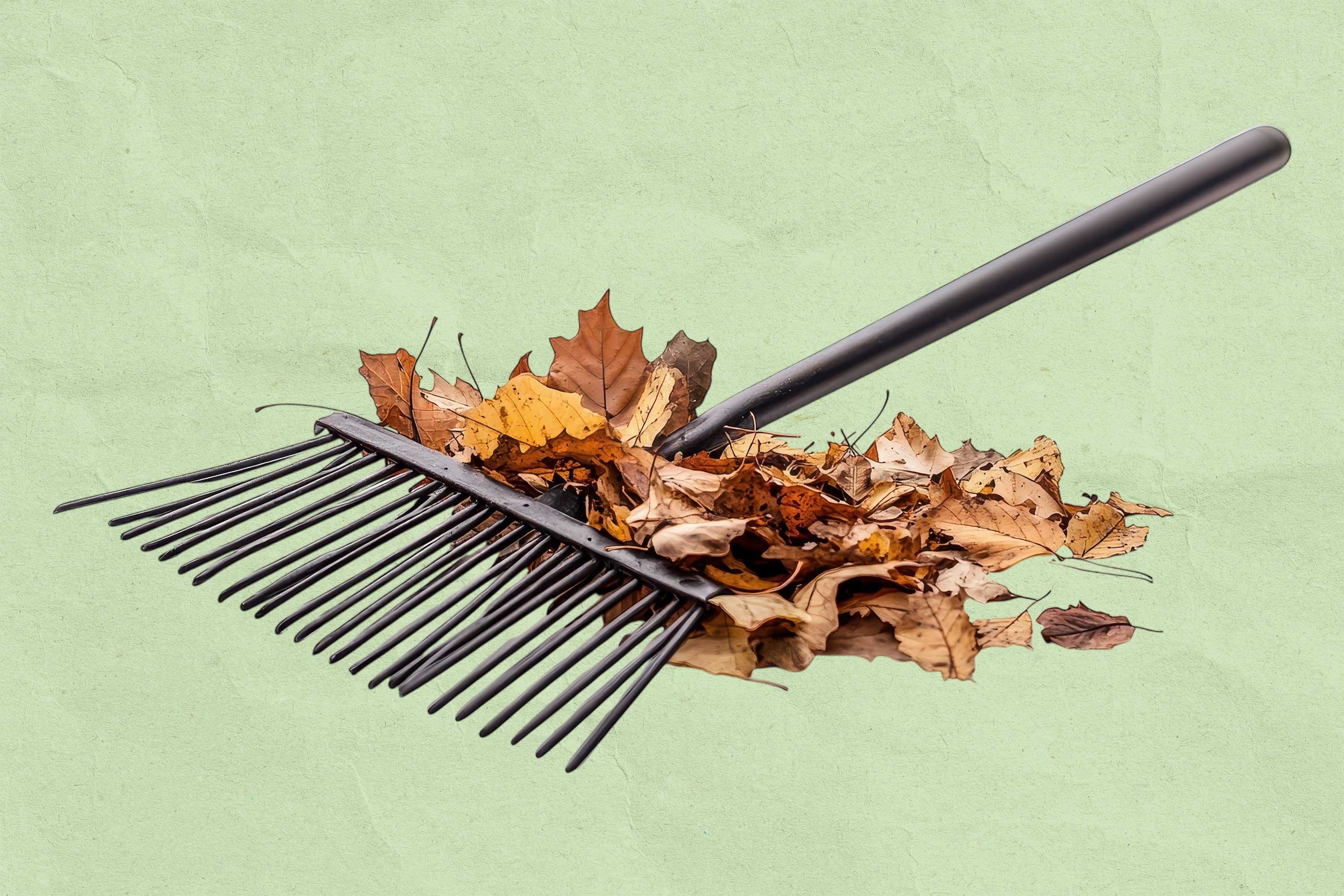This story has been updated. It originally published on Oct. 16, 2023.
Fall foliage draws leaf peepers outdoors to glimpse the colors, and enthusiastic yard-tenders into the garden shed to reach for their rakes. Or worse, for their leaf blowers. Yes, they’re noisy, but that’s far from the worst part: The gas-powered versions run on rudimentary, inefficient engines; the motors use only about 60% of the fuel in their tanks to generate gusts, while the rest is emitted as aerosols. This medley of carbon monoxide, nitrous oxides, and hydrocarbons is roughly 300 times more potent than what comes out of the tailpipe of a pickup truck.
Even if you are using a battery-powered blower or going manual with a rake, you might want to rethink your approach. Though the EPA estimates 22.3 million tons of yard trimmings get scooped up by municipalities to create communal compost or mulch, some 10.5 million tons, including leaves, wind up in methane-spurting landfills each year. Yup, you can add obsessive leaf-clearing to the list of sins of the American lawn, right alongside all the water it sucks up and the native species it pushes out.
Everything that lives on your personal patch of turf—from the insects in the soil to the trees themselves—depends on nutrients in those dead leaves and the habitat they create within the topsoil. Keeping that plant matter in the system is crucial to the nutrient cycle of your lawn’s ecosystem.
“The best practices for leaves are just like the best practices for water,” says Doug Tallamy, an ecologist at the University of Delaware and founder of Homegrown National Park, a group dedicated to restoring our yards’ natural ecosystems. “You want all the water that falls on your property to stay on your property, and you want all the leaves that fall on your property to stay on your property.”
But not everyone can let a thick carpet of leaves pile up in their yards. Even the most environmentally minded among us may feel compelled to succumb to pressure from judgmental neighbors to rake, or some folks may be required to do so by an HOA. Even if that’s the case, there are still ways to practice responsible leaf removal—and levels of what that can look like.
Good: Compost leaves
If you need to remove the leaves entirely, pile them into a compost heap on your property (although some HOAs get bent out of shape about those, too). You can eventually spread the composted leaf litter, which is naturally rich in nutrients like phosphorus, around the yard as a replacement for mulch or fertilizer. They should come in handy: A healthy backyard compost pile has one part nitrogen-rich “greens” like food scraps and three-to-four parts “browns” like leaves, twigs, and shredded cardboard.
You can also check with your town’s waste-mangement office to find out what they do with yard scraps they collect. If they’re using it as communal compost, that’s a solid alternative to tending your own personal heap—though it does come with an emissions trade-off in the form of big ol’ garbage trucks.
Better: Pile leaves in tree beds
Rake the leaves under your trees. As an added measure, consider increasing the size of your garden beds, especially those that are directly under those conifers. Why’s that? “If you remove [leaves] from your property, you’re starving all the plants,” Tallamy says, referring to substances like nitrogen, sulfur, and calcium that flora feast on. “We want to close the nutrient cycle. That means keep the leaves on your property, particularly under the trees that made them.”
If you want to skip the raking, you can mow right over everything and catch the shreds in your mower’s trimmings bag and use them like mulch in your treebeds or in your garden—but only go for the mower if the grass and fallen foliage are dry.
Best: Leave the leaves
Let the leaves fall where they may. That litter scattered across the ground helps maintain soil moisture, provides winter homes for birds, bats, bees, and bugs, and harbors bacteria and fungi, which together help break leaves down into usable nutrients for trees and plants. “The leaves are creating a blanket over the soil community that maintains the soil humidity, because everything in the soil requires high humidity,” Tallamy says.
Again, it’s totally OK to mow over the whole enchilada if you prefer. Turfgrass researchers at Michigan State University recommend putting your mower’s blade deck at the highest setting and running over everything once a week. This should shred the leaves into tiny enough bits that they fall below the height of the grass.
Additional reporting by Olivia Gieger and Corinne Iozzio.

